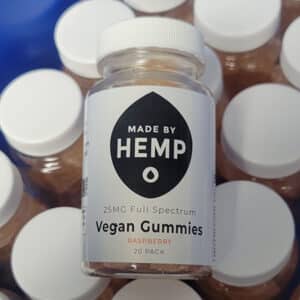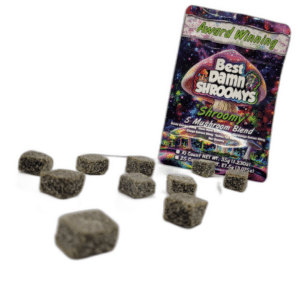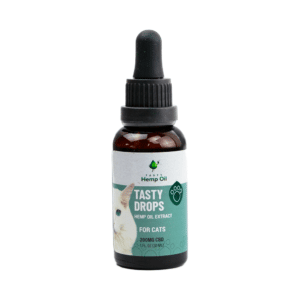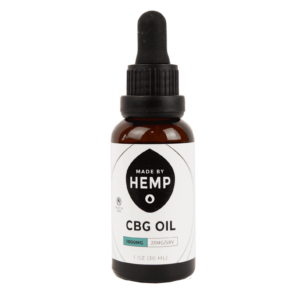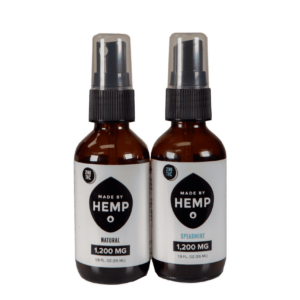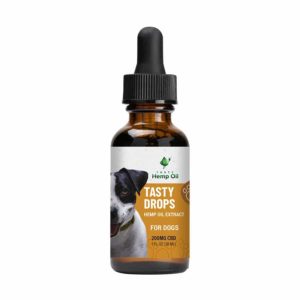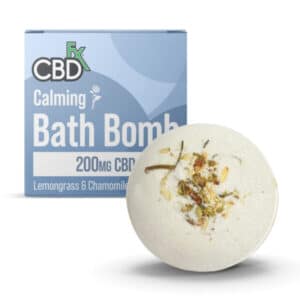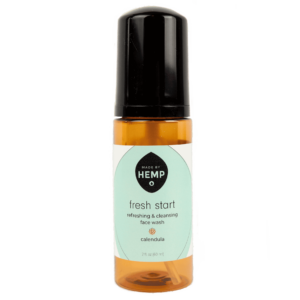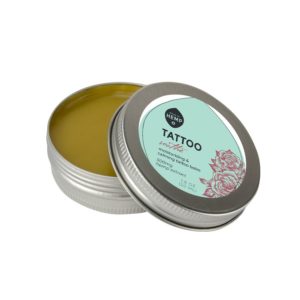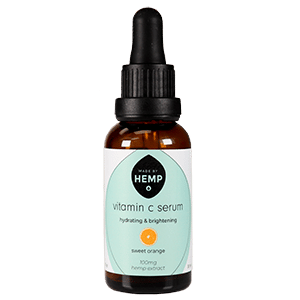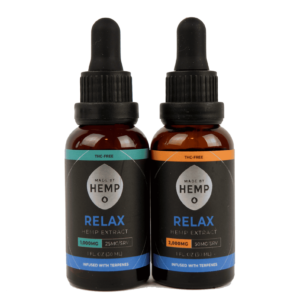At the start of 2018, the removal of cannabidiol (CBD) from the World Anti-Doping Agency’s (WADA) banned substances list went into effect. This change prompted an inquiry about the rules regarding CBD in other sports organizations. While many cover the topic of marijuana in sports, we were curious as to how sports organizations handle CBD, if at all.
CBD, or cannabidiol, is a chemical compound found naturally in the cannabis plant. When sourced from hemp, CBD oil contains less than 0.3% THC, which is the compound that causes a euphoric high that cannabis is infamous for. CBD does not get you high; instead, it is being studied for a variety of health benefits. When sourced properly, hemp-derived CBD oil is legal in the United States.
The WADA is the first major sports organization to acknowledge CBD as a compound separate from marijuana. Some leagues look as if cannabis reform is in the future, while others cannot be budged. Here’s a look at six top sports organizations and their views on CBD.
WADA
In August 2016, UFC fighter Nate Diaz spoke candidly about vaping CBD at a UFC 202 post-fight press conference. In response, the U.S. Anti-Doping Agency (USADA) issued Diaz a public warning the use of a prohibited substance. Since January 1, 2018, however, athletes like Diaz can be as outspoken about CBD as they’d like.
WADA Removes CBD as a Prohibited Substance
“Cannabidiol is no longer prohibited.” This statement, released by WADA in September 2017, is the first of its kind in the history of competitive sports. With this decision, WADA has given thousands of athletes the opportunity to use CBD as a natural alternative without the fear of consequence.
Created by the International Olympic Committee, WADA unifies global anti-doping policies. Organizations that use the WADA policy include the International Olympic Committee, the International Paralympic Committee, all International Federations, and over 200 National Anti-Doping Organizations, including USADA. USADA has advocated for the adoption of WADA policy by collegiate and professional sports leagues, although this change has yet to be embraced.
Breaking Barriers: Women in the US Betting Industry
Women in the US betting industry are breaking barriers and making significant strides in a traditionally male-dominated field. As the landscape of sports betting evolves and expands across the country, more women are stepping into key roles, challenging stereotypes, and contributing to the growth of the industry in unique ways. This article delves into the experiences, challenges, and successes of women who are carving out their place in the world of sports betting, shedding light on their journeys and the impact they are having on the sector.
We will explore how women are reshaping the narrative in the US betting industry, from leadership positions to entrepreneurship, highlighting the opportunities and obstacles they encounter along the way. Through inspiring stories and insightful perspectives, we aim to showcase the diverse talent and innovation that women bring to the table, as well as the importance of fostering inclusivity and diversity in this dynamic field. Join us on this journey as we celebrate the achievements of women in the US betting industry and examine the pivotal role they play in shaping its future.
Gender Disparities in the Betting Industry
Women in the US betting industry are making significant strides in breaking barriers and reshaping the traditionally male-dominated sector. Despite facing challenges, women are increasingly making their mark in various roles within the industry, from executives to analysts and everything in between. As reported by industry data, the number of women in leadership positions in betting companies has been steadily increasing over the past few years.
One key aspect contributing to this positive shift is the recognition of the value that diverse perspectives bring to the industry. Companies are realizing the importance of having a gender-balanced workforce, as it not only fosters innovation but also enhances decision-making processes. This shift in mindset is creating more opportunities for women to thrive and succeed in what was once a male-centric environment.
Furthermore, initiatives aimed at promoting gender diversity and inclusion in the betting industry are gaining momentum. Companies are implementing programs to support and empower women in the workplace, providing them with the necessary tools and resources to advance in their careers. These initiatives are
Overall, the progress of women in the US betting industry signifies a positive trend towards greater gender equality and representation in a field that has long been dominated by men. With more women breaking barriers and assuming leadership roles, the industry is poised to benefit from a diverse talent pool that brings fresh perspectives and ideas to the table, driving innovation and growth.
Challenges Faced by Women in the US Betting Sector
Women in the US betting industry have been breaking barriers and making significant strides in a traditionally male-dominated field. With the rise of online betting platforms and the changing landscape of the industry, more women are entering the sector and excelling in various roles. From sports betting to casino operations, women are proving their expertise and contributing to the growth and success of the industry.
One notable aspect of women’s increasing presence in the US betting industry is the shift towards inclusivity and diversity. Companies are recognizing the value of having a diverse workforce and are actively promoting gender equality within their organizations. Female executives, analysts, marketers, and customer service representatives are playing pivotal roles in driving innovation and shaping the future of the betting industry.
Despite facing challenges and stereotypes, women in the US betting industry continue to shatter glass ceilings and inspire the next generation of female professionals. By showcasing their skills, knowledge, and determination, women are proving that they belong in every aspect of the industry. With ongoing efforts to promote gender equality and empower women in the workplace, the US betting industry is witnessing a positive transformation that benefits both individuals and the industry as a whole.
Strategies for Advancing Women’s Participation in Betting
Women in the US betting industry are breaking barriers and making significant strides in a traditionally male-dominated field. With the legalization of sports betting in many states, more opportunities have opened up for women to excel in various roles within the industry. From executives to analysts to marketing specialists, women are stepping into key positions and reshaping the landscape of sports betting in the country.
One notable aspect of the increasing presence of women in the betting industry is the focus on diversity and inclusion. Companies are recognizing the value of having a diverse workforce that reflects the diverse customer base in the industry. Women bring unique perspectives and skills to the table, contributing to a more innovative and competitive environment. This shift towards inclusivity is not only beneficial for individual career growth but also for the overall success and sustainability of betting companies.
Despite the progress, challenges remain for women in the US betting industry. Gender stereotypes and biases still exist, and women often have to work harder to prove themselves in a male-centric environment. However, with a growing network of female professionals supporting each other and advocating for equality, the future looks promising for women who aspire to thrive in the dynamic and evolving world of sports betting.
The Future of Gender Equality in the US Betting Industry
Women in the US betting industry are breaking barriers and making significant strides in a traditionally male-dominated field. With the rise of online betting platforms and the increasing popularity of sports betting, more women are entering the industry as executives, analysts, marketers, and even professional bettors. These women are challenging stereotypes and reshaping the landscape of the betting world by bringing diverse perspectives and skills to the table.
Despite facing challenges such as gender bias and lack of representation, women are proving their capabilities and expertise in the betting industry. Leaders like Sara Slane, former American Gaming Association senior vice president, have been instrumental in advocating for gender equality and creating opportunities for women in the sector. As more women continue to excel and succeed in various roles within the US betting industry, the future looks promising for greater inclusivity and diversity in this dynamic and evolving field.
As women continue to make strides in the US betting industry, breaking barriers and shattering stereotypes along the way, it is evident that their presence and influence are only set to grow. With notable achievements and increasing representation in key positions, women are proving their worth and expertise in a traditionally male-dominated field. As the industry evolves and embraces diversity, the future looks promising for women looking to make their mark in the world of sports betting and gaming. By celebrating the successes of women in the industry and advocating for greater inclusivity, we can pave the way for a more equitable and thriving betting landscape for all.
The modified WADA document does caution athletes to be aware of the THC levels in the CBD products they are using. The document states, “Synthetic cannabidiol is not a cannabimimetic; however, cannabidiol extracted from cannabis plants may also contain varying concentrations of THC, which remains a prohibited substance” (source).
WADA’s threshold for THC is 150 nanograms (ng) per milliliter (ml), which was raised from 15ng/ml in 2013. This is the highest THC threshold compared to the collegiate and professional sports leagues discussed here. In terms of recreational substances, WADA has been progressive. Dr. Alan Vernec, the agency’s medical director, told the LA Times, “It’s a very active process that … is always open to debate and is discussed regularly.”
With its significant impact on the global sports community, it is our hope that WADA’s decision will prompt other sports organizations to follow its lead on CBD regulations.
NCAA and CBD

The National Collegiate Athletic Association (NCAA) regulates athletes across over 1,200 institutions, conferences, and organizations. This sports organization is known for having the strictest marijuana testing threshold in comparison not only to other sports organizations but to employers such as the Federal Aviation Administration and the U.S. military. The NCAA testing threshold for marijuana is 5 ng/ml and took effect on Aug. 1, 2013.
Cannabidiol is not listed on the NCAA 2022-23 banned substances. However, the list states, “Any substance that is chemically related to one of the above classes, even if it is not listed as an example, is also banned!” (The exclamation point is included.) It is under our assumption that CBD is considered “chemically related” to tetrahydrocannabinol, or THC, and is, therefore, a banned substance.
This was confirmed recently when Auburn University recruit CJ Harris was told he is ineligible to play football due to taking CBD oil for his seizures. From everything we read about CJ’s story, it seemed to be the NCAA simply doesn’t understand the difference between hemp and marijuana.
NCAA’s Changing Approach
In 2014, the NCAA passed legislation that reduced the penalty for a positive marijuana test from a full season to half a season. This is less of a penalty than a positive test for performance-enhancing drugs such as steroids or human growth hormone (HGH).
Regarding this change in legislation, a representative for the NCAA stated, “Street drugs are not performance-enhancing in nature, and this change will encourage schools to provide student-athletes the necessary rehabilitation” (Source). This reflects the NCAA’s changing approach to recreational drugs such as marijuana and the shift in focus from punishment to drug education and rehabilitation.
NCAA and WADA Policy
During a meeting in December of 2017, the NCAA Committee on Competitive Safeguards and Medical Aspects of Sports (CSMAS) voted on a recommendation that would modify the NCAA’s banned drug classes to reflect the prohibited list established by the WADA. Under this change, the cannabinoids class would only include marijuana; CBD would not be prohibited. This recommendation will need to see support from the NCAA governing members if it is to move forward.
Without the information to determine the permissibility of CBD, we are left to conclude that the use of CBD is banned in the NCAA. It appears, at this time, that the NCAA does not feel the pressure to acknowledge CBD as either a potential health supplement or a banned substance.
For students seeking more information regarding the use of CBD, the NCAA states, “Before consuming any nutritional/dietary supplement product, review the product with the appropriate or designated athletics department staff!”
NFL

National Football League (NFL) players experience an array of painful, oftentimes debilitating, injuries. For players both active and retired, opiates and anti-inflammatories are commonplace. In March 2017, 1,800 former NFL players sued the NFL for breaking federal drug laws in order to keep players on the field (source). The abuse of painkillers and other drugs by NFL teams is drawing public attention as an increasing number of athletes are stepping forward.
To avoid the nationwide epidemic of opioid addiction and seek a more natural solution, cannabis is becoming a more widely accepted alternative. There are many current and former NFL players who are not only proponents of marijuana but are pushing for the research of medicinal cannabis and, in particular, CBD.
Under the NFL Players Association’s (NFLPA) Policy and Program on Substances of Abuse, delta 9-THC-carboxylic acid, or marijuana, is banned at a threshold of 35 ng/ml, which was raised from 15 ng/ml in 2014. While not specifically listed under this policy, CBD is considered a product of cannabis and is also banned.
NFL’s Response to the Push for Cannabis
NFL commissioner Rodger Goodell opposes the use of recreational marijuana but says he is willing to listen to the league’s medical advisors on the potential benefit of medicinal cannabis.
The current NFL collective bargaining agreement, which is the agreement between the players’ union and management council, expires in 2020. Health and safety are key issues that are discussed during this negotiation and it is predicted that the issue of medicinal cannabis will be presented. This agreement presents the opportunity for both sides to either acknowledge CBD as a separate compound from THC or address the legality issue of cannabis as a whole.
Until then, we expect more players to speak out about the issue. Here’s what former players have to say:
“It’s time for the NFL to change its archaic standards to better protect its players. For too long, I’ve watched my teammates and good friends battle with opioid addiction and leave the game with a long road still ahead; it’s time to make a change.” – Eugene Monroe, former offensive tackle (source)
“I want to provide my old teammates and opponents with a possible remedy to their pain and struggles while helping current players possibly avoid what may lay ahead in their post-football careers.” – Jake Plummer, former quarterback (source)
“I think in due time, the NFL is going to realize that CBD is not a performance-enhancing drug. If anything, it helps with anxiety, helps with concentration, it helps with pain.” – Ebenezer Ekuban, former defensive end (source)
NBA
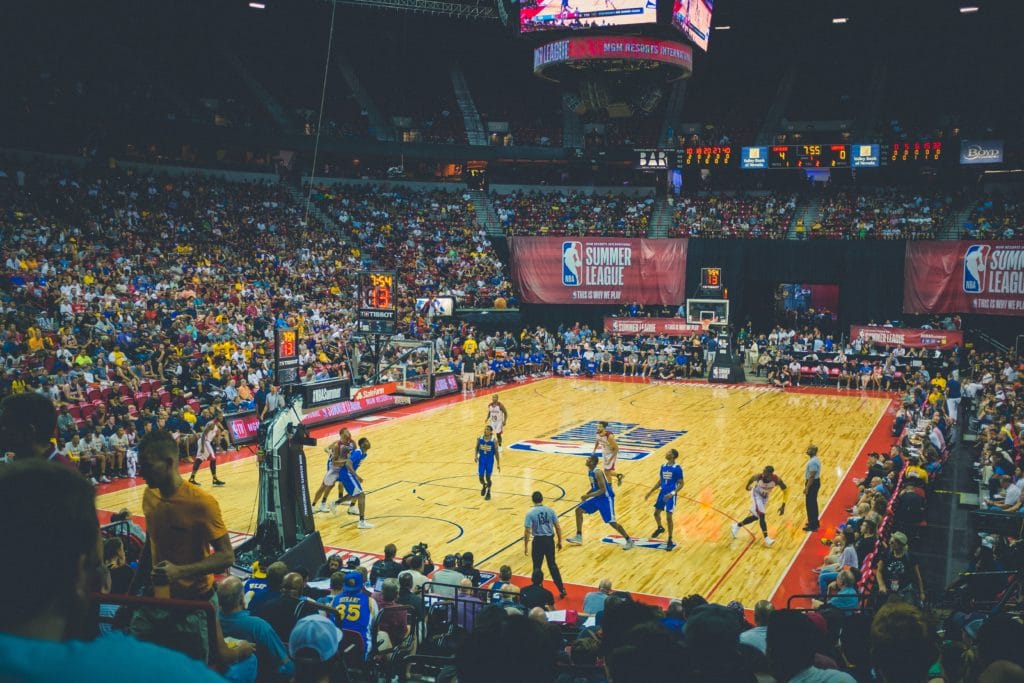
In an UNINTERRUPTED documentary, former National Basketball Association (NBA) commissioner David Stern, who tightened the league’s stance on marijuana during his time as commissioner from 1984-2014, made headlines when he stated that medical marijuana “probably should be removed from the banned substance list.”
In response to Stern’s statement, NBA executive vice president of communications Mike Bass stated, “While (current NBA) commissioner (Adam) Silver has said that we are interested in better understanding the safety and efficacy of medical marijuana, our position remains unchanged regarding the use by current NBA players of marijuana for recreational purposes” (source).
Bass was referring to comments made by Silver in August 2017, in which he stated that the league is “open” to the legalization of medical marijuana as long as the science supports its benefit.
Cannabis has been a banned substance in the NBA since 1999. Players are randomly tested four times throughout the year and must not exceed the THC threshold of 15ng/ml. If a player tests positive for marijuana, he must comply with treatment and subsequent testing. A second offense results in a $25,000 fine. Any following violations result in a five-game suspension (five games for a third offense, ten games for a fourth, etc.).
Influence of the NBA Players Association
The most recent NBA collective bargaining agreement, which is determined by the NBA and National Basketball Players Association (NBPA), was agreed upon in December 2016 and runs through the 2023-24 season. According to sources involved in the negotiation, marijuana was not a topic of discussion and remains a banned substance (source).
“I think we’ve got to change the collection bargaining agreement,” Stern said in the documentary, “and let you [the player] do what’s legal in your state.”
Al Harrington (former power forward) has been a strong proponent of the use of medical marijuana. Harrington has developed marijuana businesses in three states and hopes to show the NBA the medical benefits of marijuana. He has spoken to NBPA President Chris Paul about the possibility of the union making a push toward removing medical marijuana as a banned substance (source).
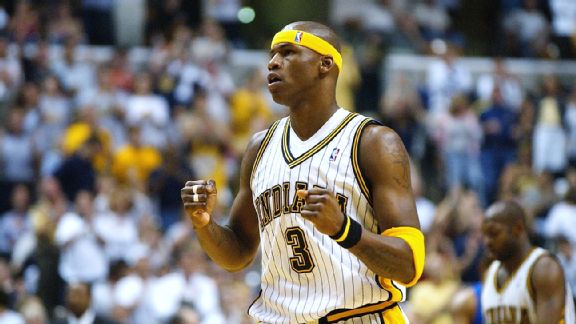
It appears the NBA is open to the idea of removing medical marijuana from the banned substances list; however, the league needs more scientific documentation before making any changes. It is also likely the NBPA will need to initiate this change as the league will not likely make it on their own.
MLB
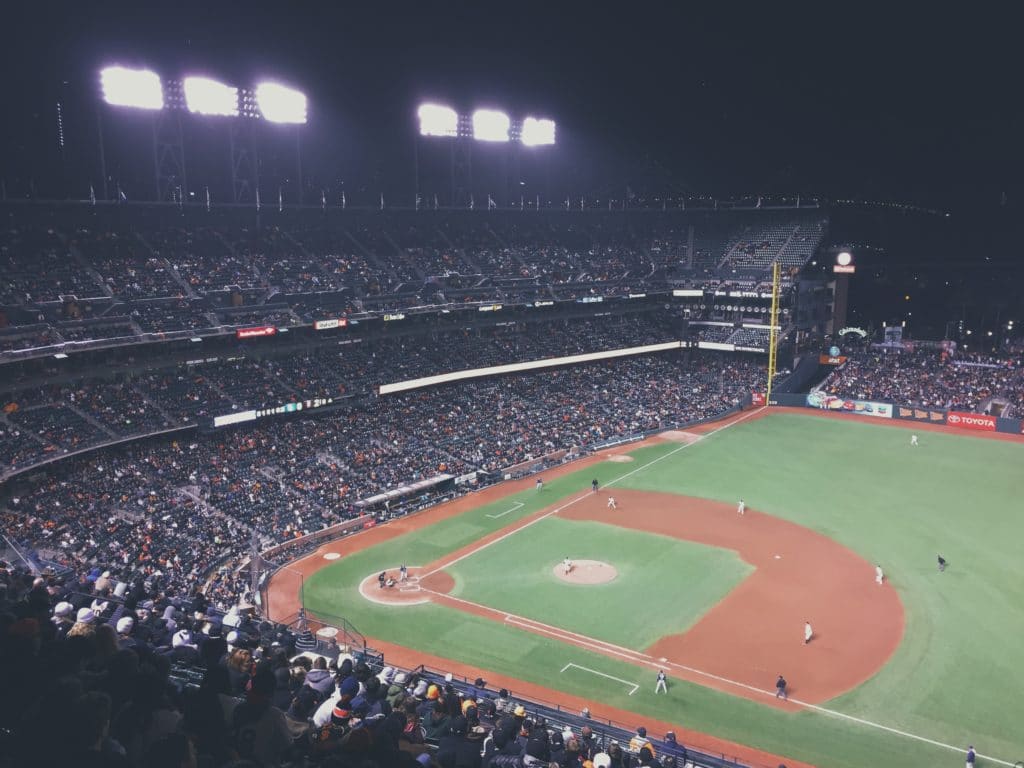
[UPDATE 12/19/19] On December 12th, 2019 in a landmark decision, Major League Baseball decided to remove all cannabis products from its list of drugs of abuse. The MLB will treat cannabis the same as alcohol moving forward. They also decided to BEGIN testing for cocaine and opioids in this same decision. (Source)
Since Major League Baseball (MLB) and the MLB Players Association (MLBPA) came to their first Joint Drug Agreement in 2002, the MLB has been lenient towards the use of marijuana. The focus of the MLB’s drug policy remains on performance-enhancing drugs, not cannabis.
Under the current Drug Prevention and Treatment Program, major league players do not participate in random drug tests for drugs of abuse, such as cannabis. Instead, players are tested upon a reasonable cause of use. Additionally, if a player exceeds the THC threshold of 50ng/ml, they are not likely subject to suspension. The player will most likely be subject to treatment and/or fines, which cannot exceed $35,000 per violation.
With the tolerance of cannabis use in the major league, one would expect to see more proponents of CBD in the organization. David Wells (former pitcher) is one of the only MLB athletes, both former and current, that is an advocate of CBD oil.
In an interview with ThePostGame’s David Katz, Wells said, “I wish I knew about it back when I played because I would’ve been all over it. I would’ve taken those risks.”
Discrepancy in Punishment
In the MLB, there is a strong discrepancy between the punishment imposed on major league players and minor league players for the use of cannabis. The MLBPA has opposed harsh punishment for marijuana use, but minor league players are not protected by the union. Because of this, the MLB sets the drug policies for minor league players.
The Minor League Baseball testing program suspends for marijuana use: one positive test results in admittance into a Drug Rehabilitation Program, a second positive test results in a 50-game suspension, a third positive test results in a 100-game suspension, and a fourth positive test results in a permanent ban from organized baseball. The MLB is the only major league sports organization to implement a ban on the use of marijuana.
The MLBPA appears to be the driving factor in the MLB’s lenient approach to marijuana use. The association’s willingness to remove CBD from the list of drugs of abuse has not been discussed. As of now, both the MLB and the MLBPA seem to be content with the current Joint Drug Agreement and there does not seem to be enough push from the players to consider a change in regards to CBD.
NHL
In terms of physical demand, hockey is high on the list. In addition to being a full-contact sport, brawls on the ice are a major draw for spectators. Similar to the NFL, the NHL team doctors answer to the taxing game of hockey by prescribing painkillers and other pain-masking medications.
Unlike the NFL, however, cannabis is not on the National Hockey League’s (NHL) list of banned substances as it is not considered performance-enhancing. However, this does not mean that the league condones the use of marijuana. Players are still tested for cannabinoids under the NHL/NHL Players Association (NHLPA) Substance Abuse and Behavioral Health Program.
If an NHL player tests positive for cannabinoids, there is no discipline. Rather, the results are sent to the NHL/NHLPA committee anonymously for review and the committee uses the results to determine testing practices in the future. Only if high levels of cannabinoids are found in the system is a player subject to a mandatory assessment by a doctor.
For retired NHL player Riley Cote (former enforcer), leaving cannabis off the performance-enhancing list is not enough. Rather than turning a blind eye to marijuana use, Cote wants the league to recognize cannabis as a medical solution.

“[Cannabis] is a tool and it needs to be treated with respect…. It’s all about increasing quality of life. It’s about helping these guys wake up the next morning, where they can feel functional enough, good enough, [that] they can enjoy their family and not worry about the pain and anxiety — that vicious cycle that generally leads to mental health issues” – Riley Cote, former enforcer (source)
The Prohibited Substances List negotiated by the NHL and NHLPA reflects the WADA’s list of performance-enhancing substances (source). With influence from the WADA, it is possible that we will see additional reform to the rules surrounding cannabinoids. As of now, the push from players is in respect to medical marijuana, not CBD; however, a change in cannabinoid policy will be to the benefit of THC as well as CBD. With the most lenient rules regarding cannabinoids in major league sports, the NHL could lead the way in professional sports in regards to CBD.
Conclusion
There are many in the world of sports that are proponents for the removal of CBD from their league’s banned substances list. Athletes are acknowledging the medical benefits of cannabis and are using their platform to promote change in their leagues. However, it will take the support of many to prompt reform, which is difficult when active athletes fear the repercussions of speaking out on a controversial topic such as marijuana. CBD and hemp are even considered controversial though they do not cause a “high”.
With more states legalizing the use of medicinal and recreational marijuana, and with an increasing acceptance of marijuana by the public, these organizations will be forced to reevaluate their policies in the upcoming years.
Removing CBD from the organization’s banned substances list is a plausible first step in cannabis reform. Acknowledging CBD as a compound separate from marijuana would provide players with a holistic alternative to addictive painkillers without the high. It would also eliminate the organizations’ shared challenge of catering to the varied state legalization laws, as CBD is legal in all 50 states. If a league does decide to move in the direction of legalization, wouldn’t CBD be a step in the right direction?


